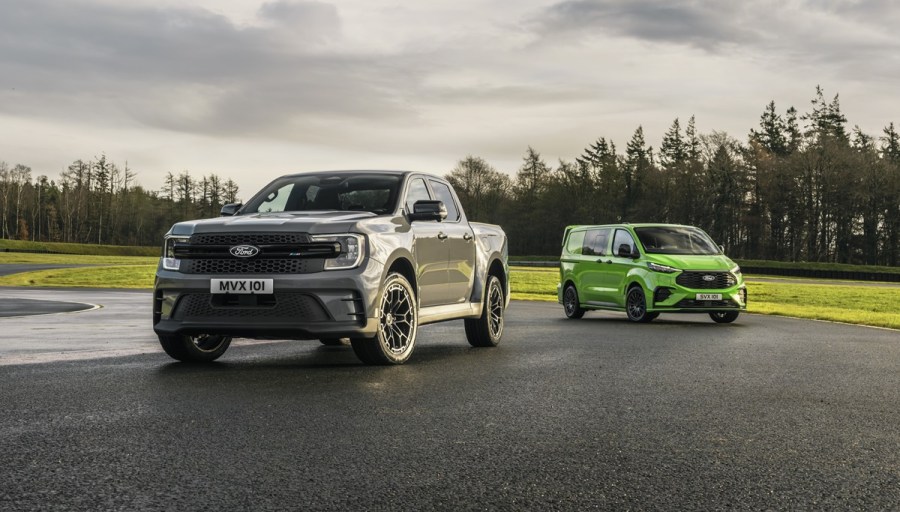Beefy Ford Ranger MS-RT joins new Transit Custom MS-RT as Ford’s commercial vehicles bulk up. But are they all show, no go? Let’s find out.
Ford of Europe has been offering ‘vans in tracksuits’ for quite a while, but now the Ranger pickup has joined the party. So, if you’re a UK- or EU-based tradie that also happens to be a budding modified car enthusiast, you might be interested in adding one of these to your work fleet. However, before you sign on the dotted line, let’s have a look to see what you’re really getting, starting with the new Ford Ranger MS-RT.
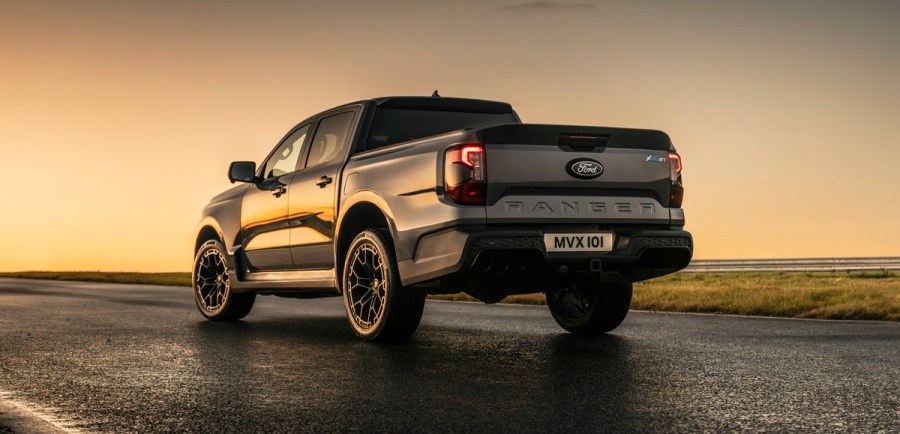
Ford Ranger MS-RT
Aesthetic Tweaks
As is tradition, a big part of the MS-RT range is the aesthetics. Inspired by motorsport, the looks of these two vehicles have definitely been altered to appeal to the traditional Fast Ford enthusiast – they’re low, wide, and even have legitimate aero packages. The Ranger, for example, gets redesigned bumpers at both the front and rear; the front one based on competition-spec Rangers used in Asia, and the rear featuring a diffuser. Naturally, the sideskirts have also had a muscular makeover to blend into the bodykit seamlessly.
If you look closely, you’ll also notice that this truck has two rear spoilers – one ducktail on the tailgate, and another on the rear of the cab. Ford says it has used computer simulations to ensure that these two additions do genuinely aid the Ranger’s aerodynamic balance through bends.
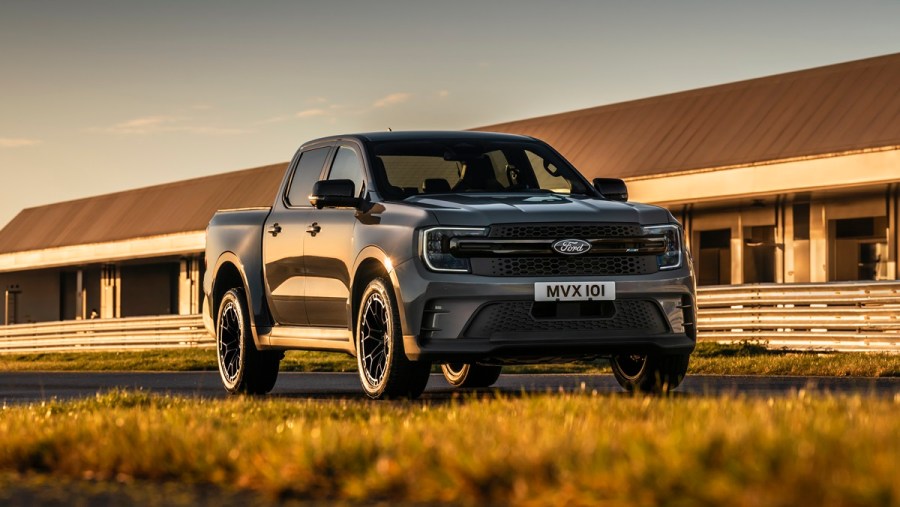
Any mechanical upgrades?
The biggest mechanical difference is the suspension. Overall, the Ford Ranger MS-RT sits 40mm lower than a regular Ranger, which not only helps to give the truck a stockier stance but also indicates that Ford views this model as being strictly for asphalt. As for how that suspension performs, Ford claims that it has attempted give the truck greater stability through corners without compromising too much on comfort. To do this, as well as lowering it, they’ve also stiffened the Ranger’s front dampers and re-tuned the rear setup.
“If Ranger Raptor is the ultimate off-road truck, then the Ranger MS-RT is the ultimate street truck,” says Hans Schep, General Manager of Ford Pro Europe. “It’s a departure from what we usually see in this segment in Europe, but with more car-like driving dynamics and the towing and carrying capacity unchanged, we believe it will offer a compelling new option for pickup customers.”
Beyond that, there isn’t much else beneath the skin to talk about. The powertrain is the regular 240hp diesel V6, and as Schep mentioned, its carrying weight and towing capacity remain the same too (one tonne and 3500kg, respectively). Essentially, the Ranger MS-RT is a truck for people who want the benefits of a pickup, but want a bit more feedback and poise from the handling. If you want anything more than that, get a Ranger Raptor instead.
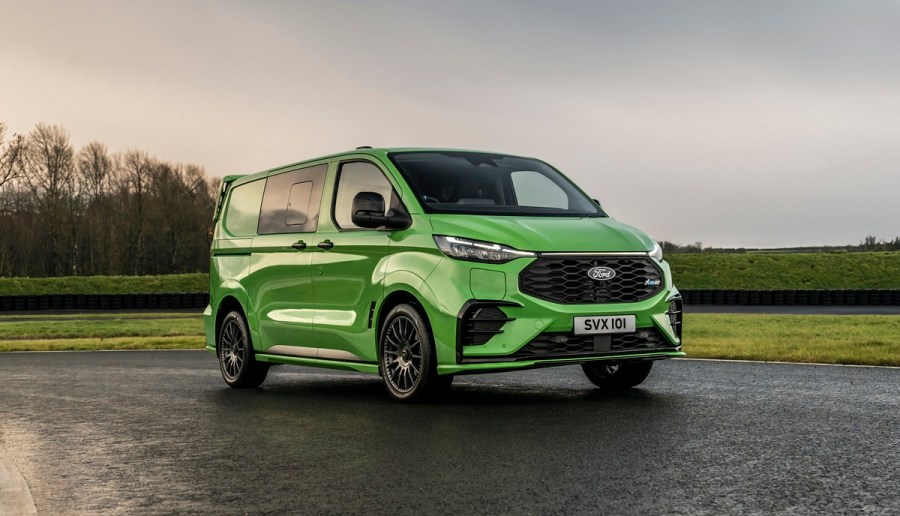
Ford Transit Custom MS-RT
Moving onto the Transit, and the recipe looks fairly similar – though there is a bigger range of powertrain options, including one that nears 300hp. But before I get to that, let’s first cast our eyes over the aesthetics. The first thing to note is that bodykit. The Transit’s new lines actually seem a bit more aggressive than the Ranger’s. Again, the package features heavily revised bumpers at either end, as well as sideskirts and plenty of additional aero. You get a splitter at the front, diffuser at the rear, and check out that rear wing in the picture below!
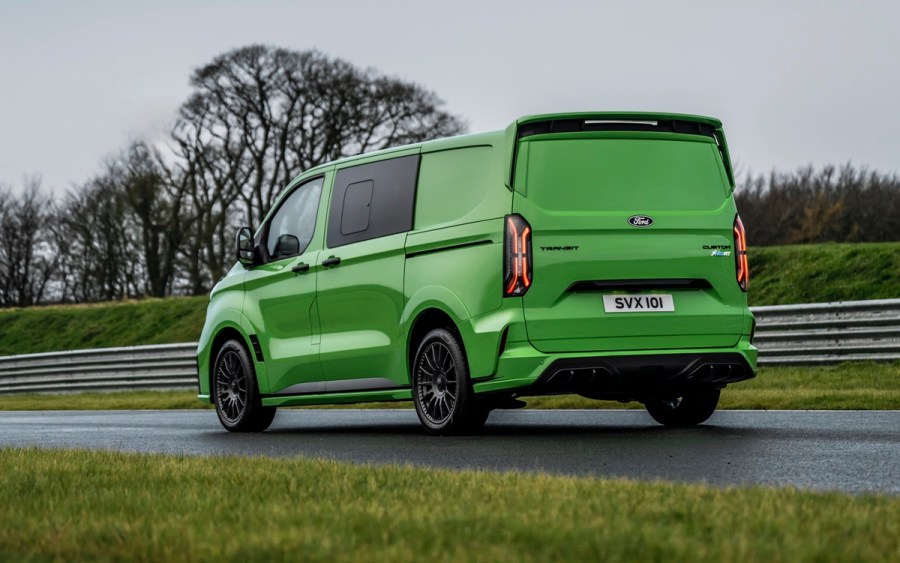
The van’s unique 19-inch alloys reduce its unsprung mass by more than 1kg per corner, while Ford has also increased the track width by 50mm. Like the Ranger, you can also opt for slightly different interior packaging; either single cab or crew cab.
As for the powertrains I teased earlier, options start low with a 2.0-liter diesel engine. You can have it hooked up to a FWD drivetrain with 150hp, or opt for an AWD variant that bumps power up to 170 horses. Alternatively, there’s a plug-in hybrid model which uses both a 2.5-liter petrol engine and electricity to churn out 232hp. The range-topper, however, is the all-electric e-Transit (as pictured, with its unique front light bar). That thing registers the equivalent of 285hp, which all gets sent to the rear wheels.
Sounds pretty lively for a Transit, if you ask me.

